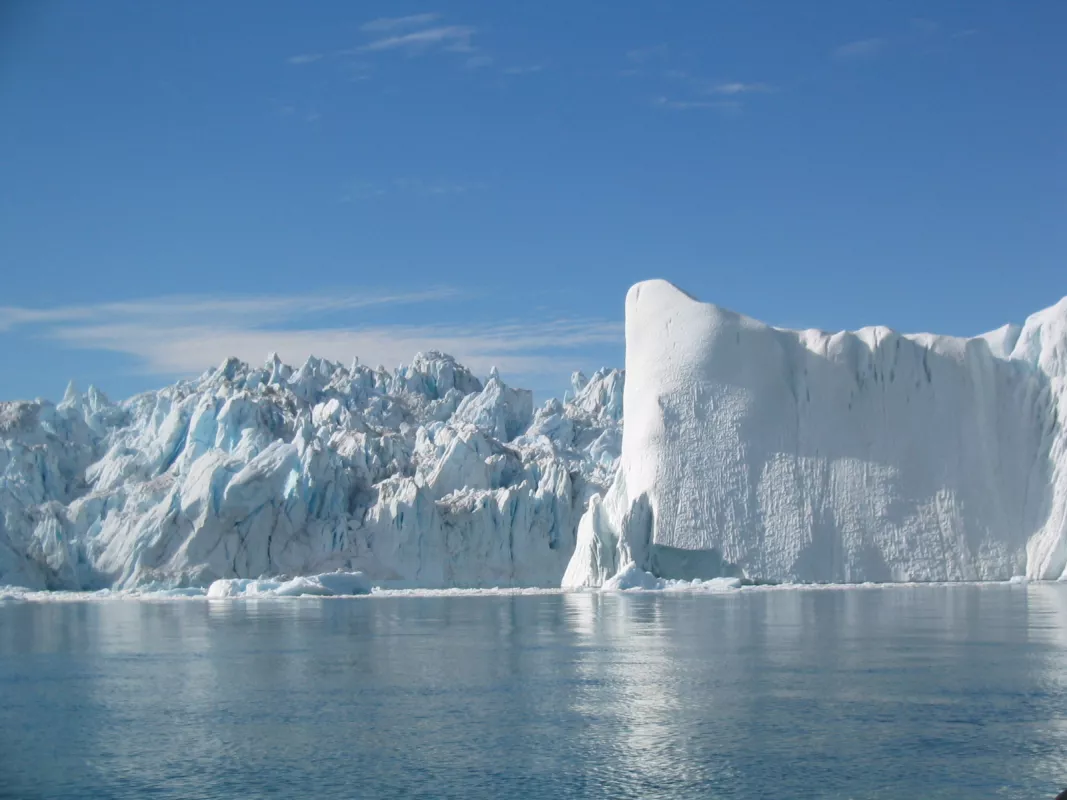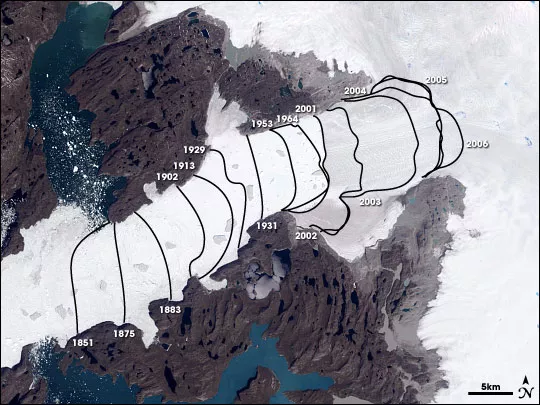For the past decade, Greenland’s ice sheet has been losing its ice more rapidly, raising concerns about its contribution to sea level rise. A recent study, published in Nature, proposes that Greenland could slow its shedding of ice from its massive ice sheet into the ocean. “This doesn’t mean glacial recession and melting will slow,” said Faezeh M. Nick, a glaciologist from the University Centre in Svalbard in Norway. Nick’s study points out that the problem is not so straightforward.
How sea levels rise
Greenland’s ice sheet contributes to sea-level rise in two ways: when the surface of the ice sheet melts and when glacial chunks of ice flow into the sea. Surface melt can be fairly accurately measured using remote sensing. The latter, however, has resulted in much debate because it is a complex system controlled by different factors. Warmer ocean temperatures increase ice flow by melting the ice underneath, called submarine melt, or by reducing the sea ice within a fjord. Warmer air melts surface water, which pools into surface crevasses and polishes away chunks of ice, resulting in calving. And within these rivers of ice, calving releases the brakes on glacial movement.
Mountains on the periphery of Greenland confine the ice sheet, which covers 80 percent of the continent. At its thickest, the ice sheet is 3 kilometers (1.86 miles) deep. Greenland’s jagged terrain makes it difficult to measure ice flow into the ocean. Until now, computer models have not accounted for its outlet glaciers, fingers of ice stretching to the ocean. Scientists, therefore, have long disputed the predictions of ice flow contribution to sea level rise. Glaciers retreat in episodic pulses. The unique width and depth of each glacier’s fjord largely controls how they respond to warming. If upstream a glacier has a deep and wide fjord at its front, when it retreats, the inevitable calving will result in more ice loss into the ocean. Since it is wide, the glacier encounters little resistance and moves faster.
On the other hand, narrow fjords may be able to support glacial fronts against calving. That is until the air warms enough for the glacier to slip through. “For the first time, this study includes the dynamic changes in model calculation to predict future sea level rise,” Nick said. To properly calculate sea level rise, scientists must incorporate the complex behaviors of glaciers. Nick’s study offers this possibility.
Complex, not uncertain
Nick and her colleagues created a model to simulate the effect of a changing climate on four outlet glaciers—Petermann, Kangerdlugssuaq, Helheim, and Jakobshavn Isbræ—which collectively drain about 22 percent of the Greenland Ice Sheet. Using two different climate scenarios, the researchers predict how these fast flowing glaciers evolve. With a mid-range future warming scenario of 2.8 degrees Celsius by 2100, the contribution to sea level rise will be 8.5–13 millimeters by 2100 and 19–30 millimeters by 2200. Under the more extreme scenario, a warming of 4.5 degrees Celsius by 2100, the figures are closer to 11–17.5 millimeters by 2100 and 29–49 millimeters by 2200. Nick says both scenarios are equally probable—a scary thought, considering under the warmer scenario, the loss of ice increases by 50 percent by 2200. “The good news is that now we can make more accurate projections,” Nick said. “The bad news is that sea level will continue rising. Warmer air, faster flow, and break off of glaciers into the ocean will increase surface melting and contribute significantly to sea level rise.”
Reference
Nick, F. M., A. Vieli, M. L. Anderson, I. Joughin, A. Payne, T. L. Edwards, F. Pattyn, and R. S. W. van de Wal. 2013. Future sea-level rise from Greenland’s main outlet glaciers in a warming climate. Nature 497, doi:10.1038/nature12068.

